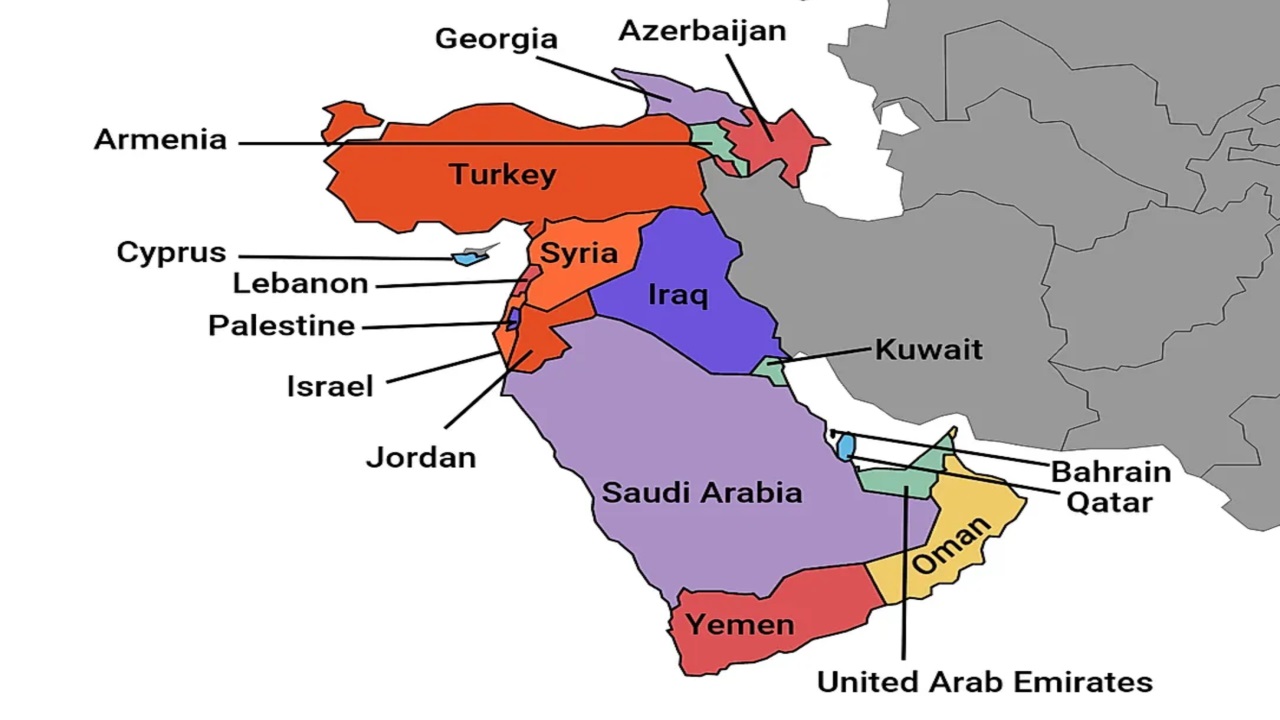West Asia’s Power Game: How Trump’s Proposal Reshapes the Region
Context
West Asia has been at the center of intense geopolitical and military conflicts for decades, but since October 7, 2023, the region has experienced an unprecedented level of violence and instability. The Israel-Hamas war, the involvement of regional and global powers, and shifting alliances have reshaped the political, economic, and security landscape.
Key Background Factors:
-
The Israel-Hamas War:
- The war began after a surprise attack by Hamas on Israel on October 7, 2023, resulting in thousands of deaths.
- Israel launched a massive counteroffensive in Gaza, causing widespread destruction and displacement of civilians.
- The conflict escalated into a broader regional crisis, involving groups backed by Iran, Hezbollah (Lebanon), and the Houthis (Yemen).
-
The Role of Iran and its Proxy Groups:
- Iran has long supported armed groups across Lebanon, Syria, Iraq, and Yemen to counter Israeli and Western influence.
- However, the war has disrupted Iran’s regional strategy, weakening its influence from the Red Sea to the Mediterranean.
-
The Abraham Accords and Saudi Arabia’s Position:
- Under the Trump administration (2017–2021), several Arab states normalized relations with Israel through the Abraham Accords.
- Saudi Arabia was expected to join but demanded a resolution for Palestinian statehood before considering normalization.
- The Gaza war has made it even harder for Saudi Arabia to engage with Israel without securing Palestinian rights.
-
Humanitarian and Economic Crisis in the Region:
- Thousands of civilians killed and millions displaced in Gaza, Lebanon, Syria, and Yemen.
- Massive destruction of infrastructure, with Gaza alone needing $50 billion for reconstruction.
- Economic instability due to sanctions, wars, and overreliance on oil exports.
In this volatile environment, former U.S. President Donald Trump, known for his bold and unconventional diplomatic style, proposed a radical new plan for Gaza and hinted at a broader regional reconfiguration.
Trump’s Proposal: The “Expanding the Canvas” Strategy
On February 4, 2025, Donald Trump made his most controversial diplomatic proposal yet. His plan focused on resolving the Gaza crisis in a way that would also serve U.S. strategic interests.
Key Aspects of Trump’s Proposal:
-
Depopulating Gaza:
- The 2.3 million residents of Gaza would be relocated to Egypt and Jordan.
- Gaza, which has been described as a war-torn “demolition site,” would be emptied of its Palestinian population.
-
U.S. Control and Redevelopment of Gaza:
- The United States would take over the Gaza Strip, turning it into a global tourism and luxury hub.
- Trump described his vision as “a riviera for the world’s people”, suggesting massive infrastructure and commercial development.
-
A New Proposal for the West Bank:
- Trump hinted that in four weeks, he would announce another major proposal for the West Bank, which remains under Israeli control but is claimed by Palestinians for their future state.
-
Saudi-Israel Normalization:
- Trump and Israeli Prime Minister Benjamin Netanyahu suggested that Saudi Arabia was close to joining the Abraham Accords.
- However, Saudi Crown Prince Mohammed bin Salman (MbS) immediately rejected this, stating that Saudi Arabia would not establish ties with Israel unless a Palestinian state was created.
Reactions to the Proposal:
-
Supporters’ Viewpoint:
- Some saw it as a bold negotiating tactic aimed at forcing stakeholders to present counteroffers.
- It reflected Trump’s “art of the deal” strategy, where an extreme opening bid is made to push the opponent toward a more realistic settlement.
-
Critics’ Viewpoint:
- Many condemned it as a blatant attempt at ethnic cleansing and colonial land acquisition.
- Palestinians and Arab leaders rejected the idea outright, calling it “unacceptable and illegal.”
- Critics argued that the plan would escalate tensions rather than resolve them, potentially sparking a wider regional war.
This proposal, even if unrealistic, highlights deeper regional tensions and the challenges of finding a peaceful resolution to the Israeli-Palestinian conflict.
Geopolitical Reconfiguration in West Asia
1. Military and Strategic Shifts
-
Israel’s “Invincibility” Challenged:
- The war has shaken Israel’s reputation as an unbeatable military power.
- Despite its technological and military superiority, Israel has suffered significant political and security challenges.
-
Iran’s Regional Influence Weakened:
- Iran’s carefully built network of proxy groups has suffered setbacks.
- However, Iran remains a key player, and its influence could be revived under changing circumstances.
-
Palestinian Statehood Gains Renewed Global Attention:
- The war has re-centered the Palestinian issue in global diplomacy, making it a major factor in any future regional negotiations.
2. Political Challenges in West Asia
-
Regional Instability and Mistrust:
- A series of proxy wars, assassinations, and airstrikes have deepened divisions among regional powers.
- Trust among nations is at an all-time low, making diplomatic solutions difficult.
-
The Role of Saudi Arabia and Iran:
- While Saudi Arabia and Iran restored ties in 2023, they remain rivals for regional dominance.
- Saudi Arabia seeks economic leadership, while Iran focuses on military influence.
3. Economic Challenges
-
Reconstruction Costs:
- Gaza: $50 billion needed to rebuild 170,000 destroyed homes.
- Lebanon: $8.5 billion in damages.
- Syria: $500 billion in economic losses due to the 13-year-long civil war.
-
Dependence on Oil and the Energy Crisis:
- West Asian economies remain heavily dependent on oil exports.
- Trump’s policies—such as increasing U.S. oil production—could push oil prices down, harming Gulf economies.
Saudi Arabia’s Growing Role in Regional Stability
1. Saudi Arabia as an Economic Powerhouse
- Largest economy in West Asia with a $1.07 trillion GDP.
- Public Investment Fund (PIF) holds $930 billion in assets.
- Saudi Aramco valued at $1.79 trillion, making it one of the world’s richest companies.
2. Saudi-U.S. Relations Under Trump
- Trump views Saudi Arabia as a vital partner in his economic and geopolitical plans.
- At Davos 2025, Trump revealed that MbS offered to invest $600 billion in the U.S.. Trump asked him to round it up to $1 trillion.
- Despite U.S.-Saudi ties, MbS remains firm on the Palestinian issue, demanding a path to statehood before normalizing ties with Israel.
Conclusion: The Future of West Asia Under Trump
The geopolitical future of West Asia is at a critical turning point, with conflicts, economic uncertainty, and shifting alliances shaping the region’s trajectory.
- Trump’s radical proposal for Gaza may be a negotiation tactic, but it has intensified political tensions.
- Saudi Arabia’s role is crucial—it has the economic power to aid reconstruction but remains firm on Palestinian statehood.
- Iran, Israel, and Arab states must decide whether to pursue diplomatic solutions or continued confrontation.
With global attention focused on West Asia, the coming months will determine whether peace or further conflict prevails.




Comments (0)